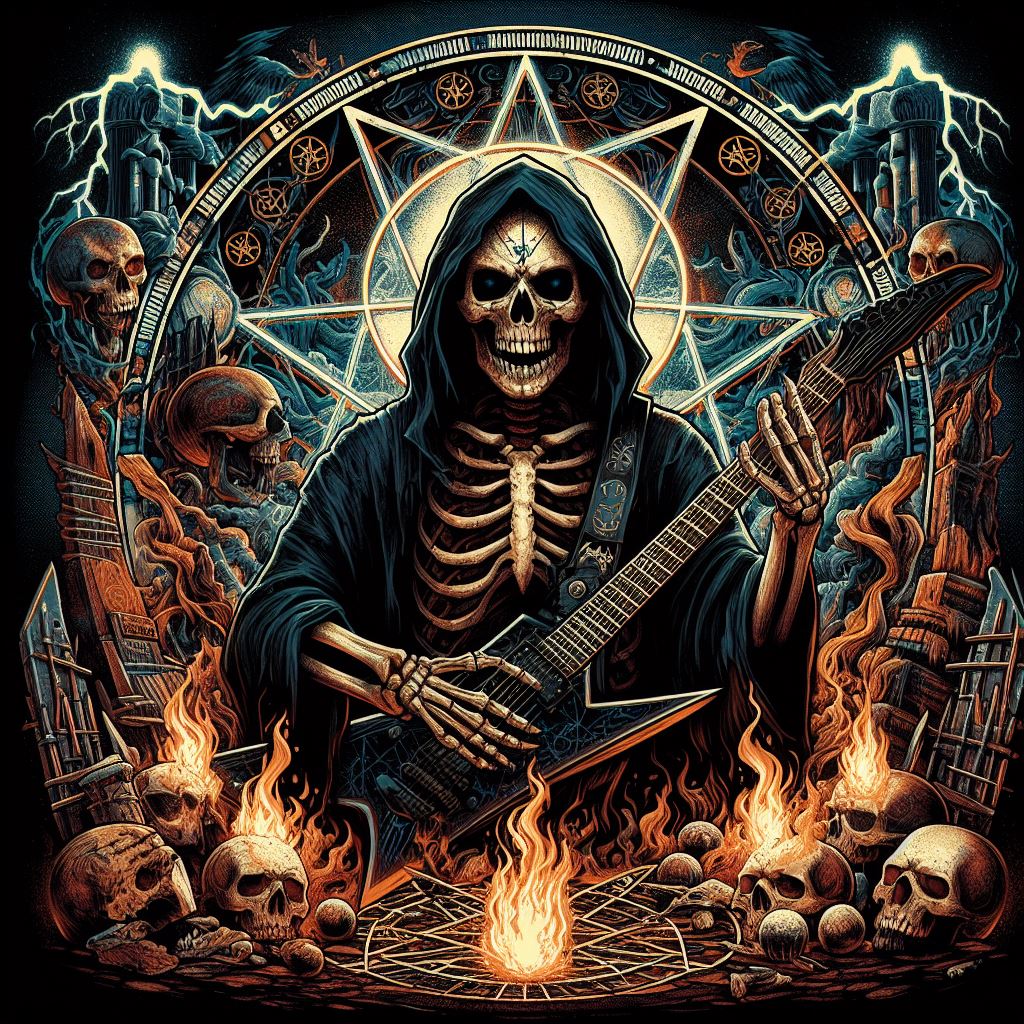For over four decades, Grave Digger has been a stalwart of the German heavy metal scene. Emerging in the early 1980s alongside bands like Helloween and Rage, they carved their own niche with powerful riffs, catchy choruses, and a distinct lyrical focus on historical and mythical themes. This article explores the band’s rich history, their rise and fall, and their enduring legacy as one of Teutonic metal’s “big four.”
Unearthing the Roots (1980-1987):
Grave Digger’s story begins in 1980 with vocalist Chris Boltendahl and guitarist Peter Masson. Building their sound on the burgeoning New Wave of British Heavy Metal, they honed their craft through local gigs. By 1983, the band (now including bassist Willi Lackmann and drummer Albert Eckardt) landed a spot on the compilation album “Rock from Hell,” marking their official entry into the metal fray.
Their debut full-length, “Heavy Metal Breakdown,” arrived in 1984, showcasing the band’s raw energy and Boltendahl’s powerful vocals. The follow-up, “Witch Hunter” (1985), solidified their musical identity, introducing epic storytelling and historical themes that would become a trademark. Songs like “Witch Hunter” and “Solomon’s Song” explored medieval lore and dark fantasy, a stark contrast to the more generic themes of many contemporary bands.
Shifting Sands and a Brief Demise (1986-1987):
Seeking wider commercial success, Grave Digger made a controversial decision in 1986. They shortened their name to “Digger” and adopted a slicker, more radio-friendly sound on the album “Stronger Than Ever.” This move, however, alienated their core fanbase who found the new direction inauthentic. With “Stronger Than Ever” failing to achieve its intended mainstream appeal, the band disbanded in 1987.
The Reaper Returns (1991-Present):
Undeterred, Boltendahl and guitarist Uwe Lulis reassembled Grave Digger in 1991 with a renewed commitment to their heavy metal roots. Joined by new members Tomi Göttlich (drums) and Jörg Michael (bass), they released “The Reaper,” an album that marked a triumphant return to form.
This period saw a string of successful releases, including “Symphony of Death” (1994), “Heart of Darkness” (1995), and the critically acclaimed concept album “Tunes of War” (1996). These albums solidified Grave Digger’s reputation as leaders in the “power metal” genre, characterized by soaring vocals, galloping double-bass drums, and themes of history, mythology, and war.
Evolution and Endurance (1998-Present):
Over the next two decades, Grave Digger continued to evolve, incorporating elements of thrash metal and symphonic metal into their sound. They embarked on numerous world tours, captivating audiences with their energetic live performances. The band also embraced concept albums, with notable releases like “Excalibur” (1999) and “The Clans Will Rise Again” (2011) exploring Arthurian legends and Scottish history, respectively.
Despite lineup changes, Grave Digger remains a potent creative force in the 21st century. Their latest single, “The Grave Is Yours” (2024), showcases their continued dedication to traditional heavy metal. With their 45th anniversary tour on the horizon, Grave Digger shows no signs of slowing down, leaving a lasting legacy as one of Germany’s most influential and enduring heavy metal bands.

Leave a Reply
You must be logged in to post a comment.